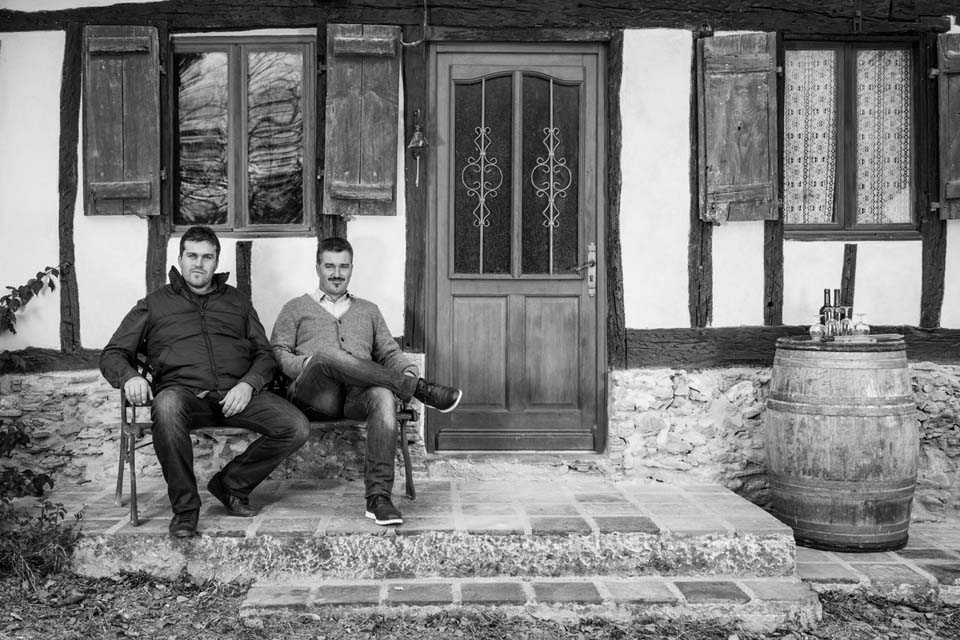
Do you remember that Portuguese wine called Mateus Rosé? It was a brand created in 1945 and designed for mass market appeal. It’s sweet and slightly fizzy and still going strong as a “fun” wine for the less discerning consumer. Many of the distinctive flask-shaped bottles ended up as table lamps. When I was a teacher, one of my students told me haughtily that his parents always drank Mateus Rosé, presumably to imply that his parents were wine connoisseurs. Of course, it told me exactly the opposite.
In general, rosé wine has come a long way from being the simple glugger of yesteryear. It has achieved popularity largely because it has become so much more interesting. It is no longer chic to be sniffy about rosé. Anyway, let’s get to business because I want to tell you about a charming rosé that’s available at Wine Connection, an excellent wine specialist which has branches all over Singapore, Malaysia and Thailand with three branches here in Pattaya and Jomtien.
But first, what is rosé? Yes, we all know it’s a pink wine, but there’s more to it. Almost any variety of red grapes can be used to make it, though Shiraz and Grenache are popular among winemakers. Rosé is aromatic, light and fragrant (or should be) with reminders of fresh cut flowers and ripe red fruits like strawberry and cherry. Sometimes there are tantalizing hints of delicate floral aromas, oranges, grapefruit or lychee. Rosé works well with most foods and for something to accompany a light snack it’s perfect, especially when served ice-cold. The wine I mean, not the snack. European rosé tends to be dry especially the dry-as-a-bone rosé from the South of France. If you prefer dry wine, stay with European rosé because many New World examples are usually on the sweet side. Many companies also make sparkling rosé.
You might be surprised to know that both red and white grapes produce clear, colourless juice when pressed. The colour comes almost entirely from the grape skins. There are several ways to make rosé but the most common is known as maceration (or soaking), which involves leaving the skins to soak in the newly-crushed grape juice for a limited amount of time. It can be anywhere between six to forty-eight hours, depending on the required intensity of colour and the style. As a result, rosé can come in every shade of pink you can imagine, ranging from a pale “onion-skin” orange to a vivid near-purple, depending on the grape used and the length of the maceration.
Rosé should always be consumed when it’s young and fresh, so it’s generally safer to buy it where you can be reasonably sure that there is a rapid turnover of stock.
Le Petit Gascoûn 2020 IGP Côtes de Gascogne (France) Bt 650 @ Wine Connection
 Gascony you may recall, is an area down in the south-west corner of France close to the Pyrenees and especially noted for its white wine though quite a lot of red is also produced there. In case you were wondering, IGP stands for “Indication Géographique Protégée” which is a rather grand name for what is really vin de pays (country wine) from a designated region. Made by the award-winning brothers Christophe and Sebastien Laffitte, this wine is a delightful colour; a kind of smoked-salmon pink with flecks of gold.
Gascony you may recall, is an area down in the south-west corner of France close to the Pyrenees and especially noted for its white wine though quite a lot of red is also produced there. In case you were wondering, IGP stands for “Indication Géographique Protégée” which is a rather grand name for what is really vin de pays (country wine) from a designated region. Made by the award-winning brothers Christophe and Sebastien Laffitte, this wine is a delightful colour; a kind of smoked-salmon pink with flecks of gold.
The gentle aroma is lovely too: fresh, floral and slightly citrus with hints of tangerine and possibly redcurrant. There could be a hint of pineapple in there but I’ll leave you to decide that for yourself. It certainly smells more expensive than it actually is. The label doesn’t give the grape varieties though brief research revealed that the wine is a blend of Cabernet Franc, Tannat and Marselan. Interestingly, the grape known as Marselan is a cross between Cabernet Sauvignon and Grenache. It was first bred in 1961 by the French ampelographer Paul Truel near the town of Marseillan in southern France.
The wine has a surprisingly complex taste with hints of mandarin and pear. It has a suave, silky texture and just enough fruit on the palate. It’s fresh, crisp and completely dry but light on acidity, making it a light-bodied easy drinker with an interesting taste profile. There’s also a long, dry finish which holds the fruity taste and at just 11.5% ABV this wine would make an attractive aperitif. It would work well with rich cheese dishes such as quiche and could even make a good partner for some Thai dishes if they’re not too spicy. In many ways, this is a splendid little wine and a fine example of a rosé of the region. Don’t forget, always serve rosé really cold. Straight out of the fridge will do.
 |
 |
 |





